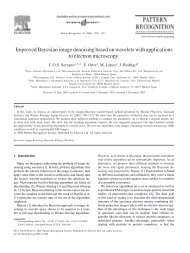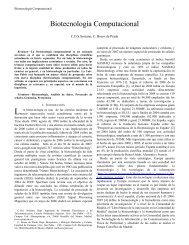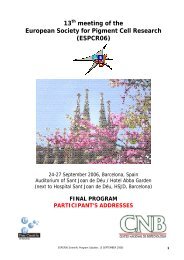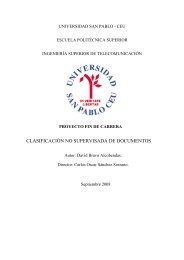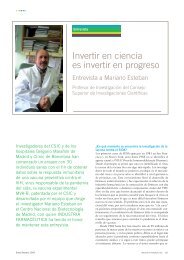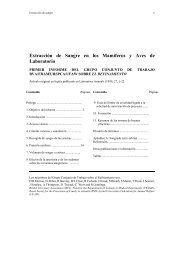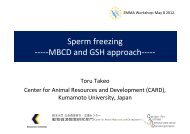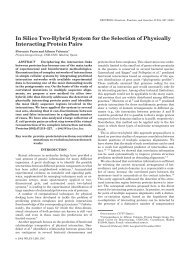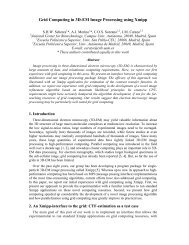XMIPP introductory demo
XMIPP introductory demo
XMIPP introductory demo
Create successful ePaper yourself
Turn your PDF publications into a flip-book with our unique Google optimized e-Paper software.
3 Concluding remarksThe Preprocessing stage is common for most data sets, but the work flow through the subsequentprotocols highly depends on the questions you want to answer. An overview of the possibleworkflows is given in Figure 22. Note that protocols indicated in orange may be executed inparallel on multi-processor (super-) computers. A list of some of the most popular work flows isgiven below.• In this <strong>demo</strong> we have performed RCT reconstruction of particles that have a strong preferentialtop view and that can be classified based on their rotational symmetry. We haveperformed this work flow: [Rotational Spectra Classification -> ML2D classification ->RCT reconstruction].• In the more general case of RCT reconstruction, particles fall in many different orientationson the grid and rotational spectra may not be used for classification. In this case onewould simultaneously align and classify the distinct projection directions using ML2Dclassification (with multiple classes), and then perform a RCT 3D reconstruction for eachof the classes separately: [ML2D classification -> RCT reconstruction]. In theory, thisshould give several different rotated versions of the same 3D structure (except for missingcone artefacts, flattening etc.). Currently, we do not have a standardized protocol to alignthese 3D volumes, but you may use the stand-alone program xmipp_align_volumesfor that.• 2D analysis of structurally heterogeneous data (i.e. data comprising projections of differentproteins/complexes, exhibiting different projection directions or distinct conformations)is generally performed using [ML2D classification]. In many cases, this alreadyresults in a satisfactory separation of the (2D) structural heterogeneity. However, one mayalways perform a check for additional variability using a subsequent kerdenSOM classification.[ML2D classification -> kerdenSOM classification]. In particular, the ability touse a focused mask has been very useful in the past to classify small changes that occur ina specific, localized areas (we did this in section 2.9).• Once we have an initial 3D reconstruction (obtained through RCT or by other means),we may choose to separate structural heterogeneity (e.g. in the form of distinct conformations)through [ML3D classification]. The resulting classes (which are hopefullyhomogeneous) may then be refined separately as explained in the next step.• If we have an initial 3D reconstruction and our data are structurally homogeneous, thenwe may refine the initial 3D map using either [Projection matching refinement] or [Multiresolutionrefinement].Finally, please remember that our funding depends on your citations to our work. Therefore, if<strong>XMIPP</strong> has been useful in your research, please cite our papers. A detailed list of relevantreferences may be found on the <strong>XMIPP</strong> Wiki ListOfReferences.Have fun!!The Xmipp team34




